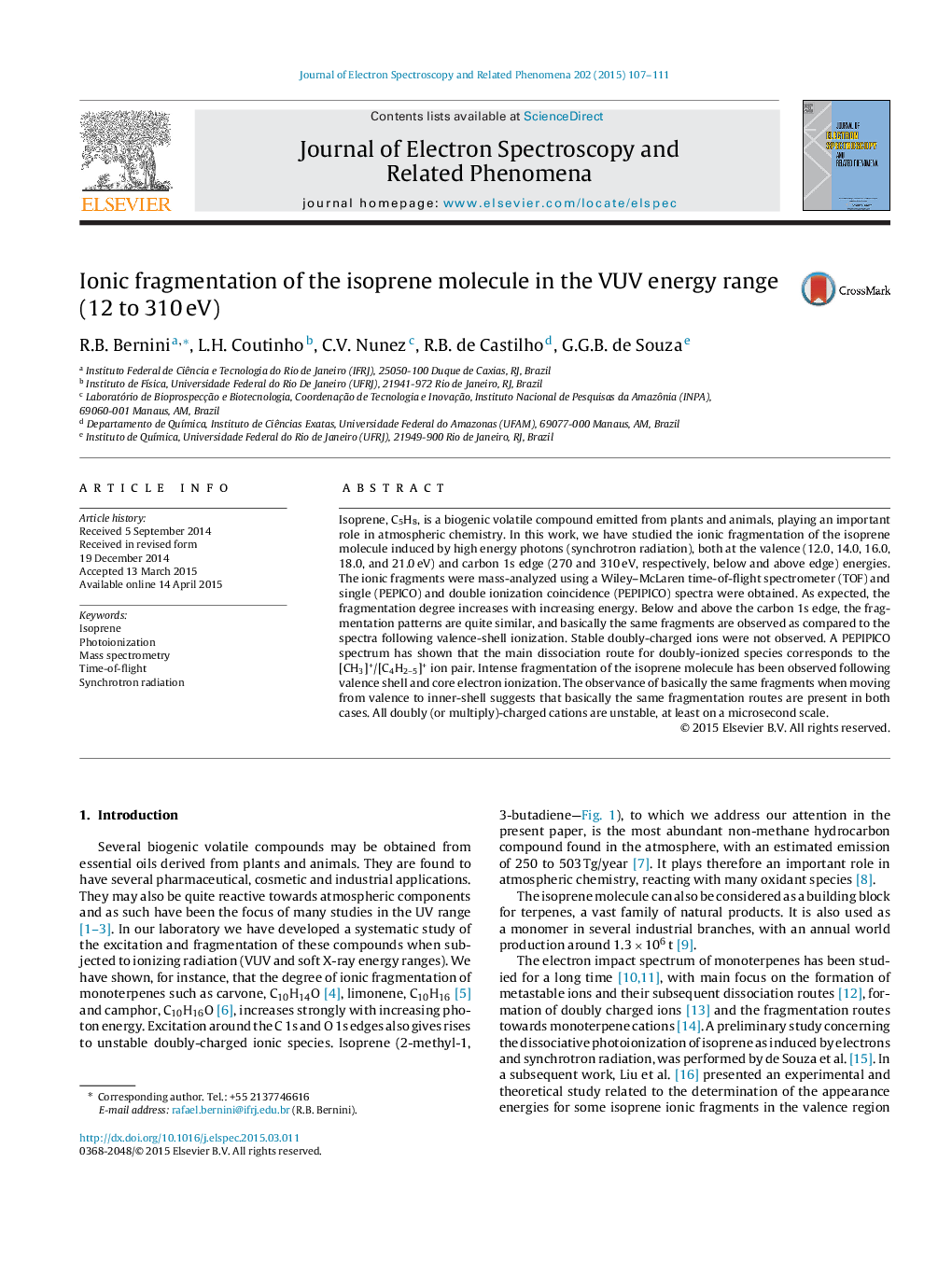| Article ID | Journal | Published Year | Pages | File Type |
|---|---|---|---|---|
| 5395704 | Journal of Electron Spectroscopy and Related Phenomena | 2015 | 5 Pages |
Abstract
Isoprene, C5H8, is a biogenic volatile compound emitted from plants and animals, playing an important role in atmospheric chemistry. In this work, we have studied the ionic fragmentation of the isoprene molecule induced by high energy photons (synchrotron radiation), both at the valence (12.0, 14.0, 16.0, 18.0, and 21.0Â eV) and carbon 1s edge (270 and 310Â eV, respectively, below and above edge) energies. The ionic fragments were mass-analyzed using a Wiley-McLaren time-of-flight spectrometer (TOF) and single (PEPICO) and double ionization coincidence (PEPIPICO) spectra were obtained. As expected, the fragmentation degree increases with increasing energy. Below and above the carbon 1s edge, the fragmentation patterns are quite similar, and basically the same fragments are observed as compared to the spectra following valence-shell ionization. Stable doubly-charged ions were not observed. A PEPIPICO spectrum has shown that the main dissociation route for doubly-ionized species corresponds to the [CH3]+/[C4H2-5]+ ion pair. Intense fragmentation of the isoprene molecule has been observed following valence shell and core electron ionization. The observance of basically the same fragments when moving from valence to inner-shell suggests that basically the same fragmentation routes are present in both cases. All doubly (or multiply)-charged cations are unstable, at least on a microsecond scale.
Related Topics
Physical Sciences and Engineering
Chemistry
Physical and Theoretical Chemistry
Authors
R.B. Bernini, L.H. Coutinho, C.V. Nunez, R.B. de Castilho, G.G.B. de Souza,
